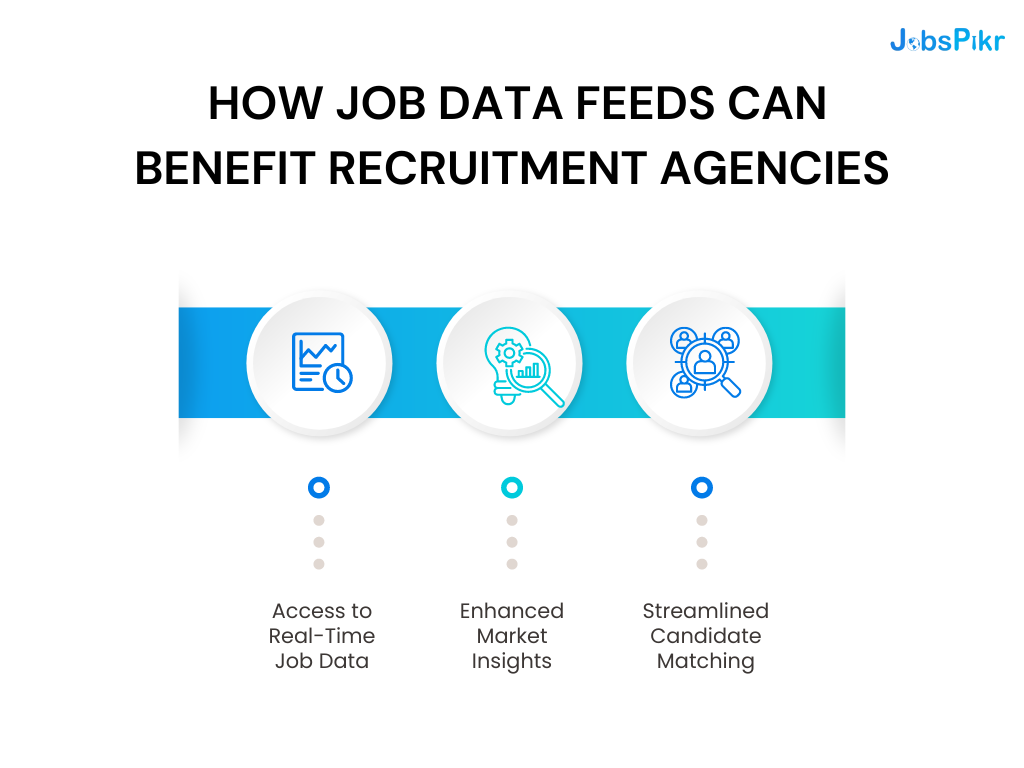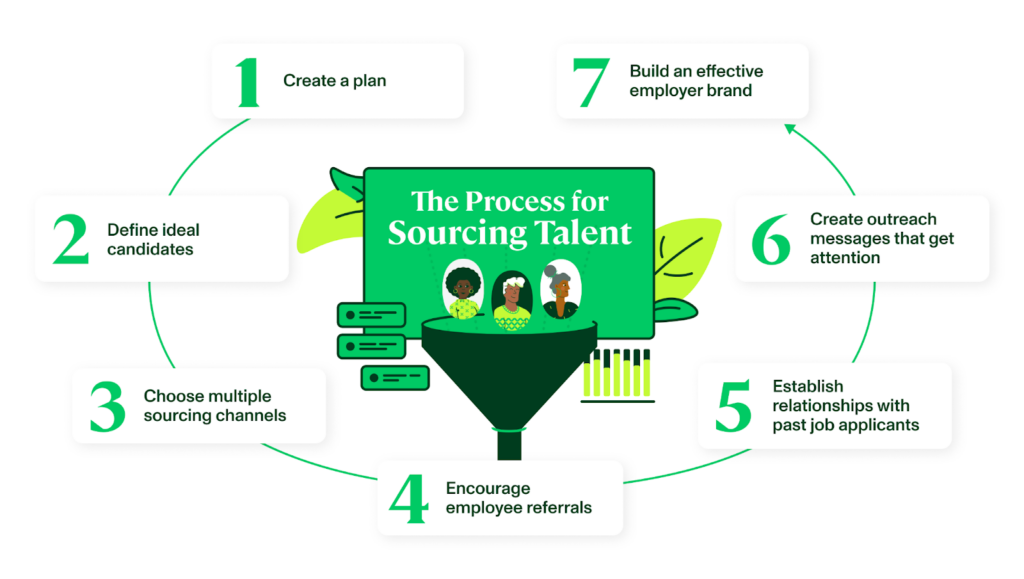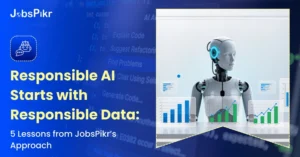- What is The Importance of Talent Sourcing in Recruitment?
- Why Job Data Feeds Are Crucial for Effective Talent Acquisition?
- Leveraging LinkedIn Scrapers for Talent Sourcing
- How LinkedIn Scrapers and Job Data Feeds Drive Optimal Recruitment Results?
- What’s the Next Step in Talent Sourcing After Strategy Planning?
- Creating a Talent Sourcing Strategy Template
- Conclusion
A well-designed talent sourcing strategy is essential for staying ahead of the curve. This is where LinkedIn scrapers and job data feeds come into play, offering an incredible opportunity for organizations to enhance their talent acquisition efforts.
Recruitment agencies, in particular, can benefit from these tools by accessing real-time candidate data, enabling them to make informed decisions, streamline processes, and improve the overall quality of hires. In this article, we will explore how companies can optimize their talent sourcing strategies using job data feeds and LinkedIn scrapers, providing actionable insights to help recruitment professionals succeed in the ever-changing talent landscape.
What is The Importance of Talent Sourcing in Recruitment?
Talent sourcing is the process of proactively identifying, attracting, and engaging potential candidates for open positions. It goes beyond merely posting job ads and waiting for applicants; it requires a comprehensive approach to finding the right talent from a variety of sources, such as job boards, social media platforms, and professional networks like LinkedIn.
A well-defined talent sourcing strategy can provide a significant competitive edge in today’s talent market, where the demand for top talent is high, and the supply is often limited. Recruitment agencies need to employ sophisticated tools and techniques to tap into the right talent pools, streamline the sourcing process, and reduce time-to-hire.

Image Source: Technology Signals
Why Job Data Feeds Are Crucial for Effective Talent Acquisition?
Job data feeds are an essential component of a modern talent acquisition sourcing strategy. These feeds provide real-time information on job postings from multiple sources, including job boards, company websites, and social media platforms. By utilizing job data feeds, recruitment agencies can gain access to a continuous stream of up-to-date job market information, helping them stay competitive and agile.
Job data feeds can be integrated into applicant tracking systems (ATS) or recruitment platforms, allowing recruiters to monitor the latest job postings and market trends. This data-driven approach enables recruiters to stay ahead of the competition and quickly identify job openings that align with their candidate pool.
Here’s how job data feeds can benefit recruitment agencies:
1. Access to Real-Time Job Data
Job data feeds provide instant access to live job listings across various platforms. This real-time data ensures that recruiters are always aware of the latest job openings and can act quickly to fill positions. By having access to fresh data, recruitment agencies can source candidates faster and stay competitive in the fast-paced job market.
2. Enhanced Market Insights
By aggregating job postings from multiple sources, job data feeds offer a comprehensive view of the job market. Recruiters can use this data to identify hiring trends, understand the demand for specific skill sets, and analyze industry-specific job market conditions. This information allows recruiters to adapt their talent sourcing strategy to meet market needs more effectively.
3. Streamlined Candidate Matching
With the integration of job data feeds into recruitment platforms, candidate matching becomes more efficient. Recruiters can quickly match job openings with suitable candidates from their database, saving time and effort. This streamlined process leads to faster placements and better candidate-job fit, improving overall recruitment outcomes.

Leveraging LinkedIn Scrapers for Talent Sourcing
LinkedIn is undoubtedly the most powerful professional networking platform for recruitment. With over 800 million members globally, it offers a vast pool of potential candidates. However, manually searching for candidates on LinkedIn can be time-consuming and inefficient. This is where LinkedIn scrapers come in handy.
A LinkedIn scraper is a tool that automates the extraction of candidate data from LinkedIn profiles. It allows recruiters to gather relevant information, such as candidate qualifications, work experience, skills, and contact details, without having to browse profiles manually. This automation speeds up the talent sourcing process and enables recruiters to build a more comprehensive talent pipeline.
Here’s how LinkedIn scrapers can benefit recruitment agencies:
1. Automated Candidate Data Collection
LinkedIn scrapers automate the process of gathering candidate information, making it easier for recruiters to build large databases of qualified candidates. Instead of manually searching for candidates one by one, recruiters can use scrapers to extract data in bulk, saving time and effort. This automation frees up recruiters to focus on more strategic tasks, such as candidate engagement and relationship-building.
2. Advanced Search Capabilities
LinkedIn scrapers can be customized to perform advanced searches based on specific criteria, such as job titles, industries, locations, and skill sets. This allows recruiters to target candidates with precision, ensuring that they are reaching the most relevant talent for their open positions. The ability to filter and refine searches is crucial for improving the efficiency of the talent sourcing strategy.
3. Real-Time Candidate Insights
One of the significant advantages of using LinkedIn scrapers is the ability to gather real-time data on candidates. By automating the data collection process, recruitment agencies can access up-to-date information on candidate profiles, including recent job changes, skill updates, and endorsements. This ensures that recruiters are working with the most current and accurate data, leading to better decision-making during the hiring process.
4. Building a Talent Pipeline
LinkedIn scrapers can help recruiters build and maintain a robust talent pipeline. By continuously scraping and updating candidate information, recruitment agencies can keep their talent pool fresh and relevant. This proactive approach allows recruiters to stay ready for future hiring needs, reducing time-to-fill and improving the overall efficiency of the recruitment process.
How LinkedIn Scrapers and Job Data Feeds Drive Optimal Recruitment Results?
The true power of modern talent sourcing lies in the combination of LinkedIn scrapers and job data feeds. By integrating these two technologies, recruitment agencies can create a highly efficient and data-driven talent acquisition sourcing strategy that enhances their ability to find, attract, and engage top candidates.
Here’s how combining LinkedIn scrapers with job data feeds can elevate your recruitment process:
1. Real-Time Candidate and Job Matching
By using LinkedIn scrapers to gather candidate data and job data feeds to monitor job openings, recruiters can create a dynamic and responsive recruitment process. When a new job posting appears in the data feed, recruiters can immediately match it with relevant candidates from their database. This real-time matching improves the speed and accuracy of placements, helping recruitment agencies fill positions faster and more efficiently.
2. Enhanced Data-Driven Decision Making
Data is the cornerstone of any effective talent sourcing strategy. The combination of LinkedIn scrapers and job data feeds provides recruiters with a wealth of real-time data on both candidates and job openings. This data can be analyzed to identify trends, optimize sourcing efforts, and make more informed decisions about candidate-job fit. Data-driven decision-making leads to better hiring outcomes and reduces the risk of making poor hiring choices.
3. Improved Candidate Engagement
Engaging with candidates at the right time is critical for successful talent acquisition. LinkedIn scrapers allow recruiters to stay informed about candidate activity, such as job changes or skill updates. By combining this information with job data feeds, recruiters can reach out to candidates with relevant opportunities as soon as they become available. This timely and personalized approach improves candidate engagement and increases the likelihood of successful placements.
4. Optimized Talent Sourcing Strategy
The integration of LinkedIn scrapers and job data feeds allows recruitment agencies to optimize their talent sourcing strategy by automating repetitive tasks, enhancing candidate-job matching, and providing real-time insights. This streamlined approach reduces manual effort, saves time, and enables recruiters to focus on high-value activities, such as building relationships with candidates and clients.
What’s the Next Step in Talent Sourcing After Strategy Planning?
Once your talent sourcing strategy is in place, the next step in the process is execution. This involves implementing the tools and techniques identified in the planning phase and continuously refining your approach based on real-time data and feedback.
The key components of the execution phase include:
- Leveraging Technology: Implement LinkedIn scrapers and job data feeds to automate the sourcing process and gather real-time data on candidates and job openings.
- Engaging with Candidates: Reach out to potential candidates with personalized messages based on their qualifications, interests, and activity.
- Building Relationships: Focus on building long-term relationships with candidates, even if they are not ready to move immediately. A strong talent pipeline ensures you are prepared for future hiring needs.
- Measuring Success: Continuously monitor the effectiveness of your talent acquisition sourcing strategy by analyzing key metrics such as time-to-fill, candidate quality, and retention rates.
Creating a Talent Sourcing Strategy Template
To help recruitment agencies implement a successful talent sourcing strategy, it’s essential to have a clear and actionable template. Below is a step-by-step guide to creating an effective talent sourcing strategy template:
Step 1: Define Your Talent Needs
Identify the specific roles and skill sets that your clients are looking for. Understand the industry trends and market demands to ensure your strategy aligns with current hiring needs.
Step 2: Choose Your Sourcing Channels
Determine the best channels for sourcing candidates, such as LinkedIn, job boards, social media, and professional networks. Utilize tools like LinkedIn scrapers and job data feeds to automate and optimize the process.
Step 3: Build a Talent Pool
Proactively gather candidate data from multiple sources and create a database of qualified candidates. Continuously update and maintain your talent pool to ensure it remains relevant.
Step 4: Engage with Candidates
Develop a plan for reaching out to candidates and building relationships. Use personalized messaging and targeted outreach to connect with candidates at the right time.
Step 5: Measure and Optimize
Track key performance metrics, such as time-to-fill, candidate quality, and recruitment costs. Use this data to refine your strategy and improve your recruitment outcomes.

Image Source: untapped
Conclusion
In today’s competitive job market, leveraging modern tools such as LinkedIn scrapers and job data feeds is crucial for optimizing your talent sourcing strategy. These tools offer recruitment agencies the ability to access real-time data, automate tedious tasks, and engage with candidates more effectively. By combining these technologies with a data-driven approach, recruitment professionals can enhance their talent acquisition sourcing strategy, reduce time-to-hire, and improve the quality of placements.By integrating these tools into your overall talent acquisition strategy, recruitment agencies can stay ahead of the competition and successfully navigate the evolving landscape of talent sourcing. Sign up today!




